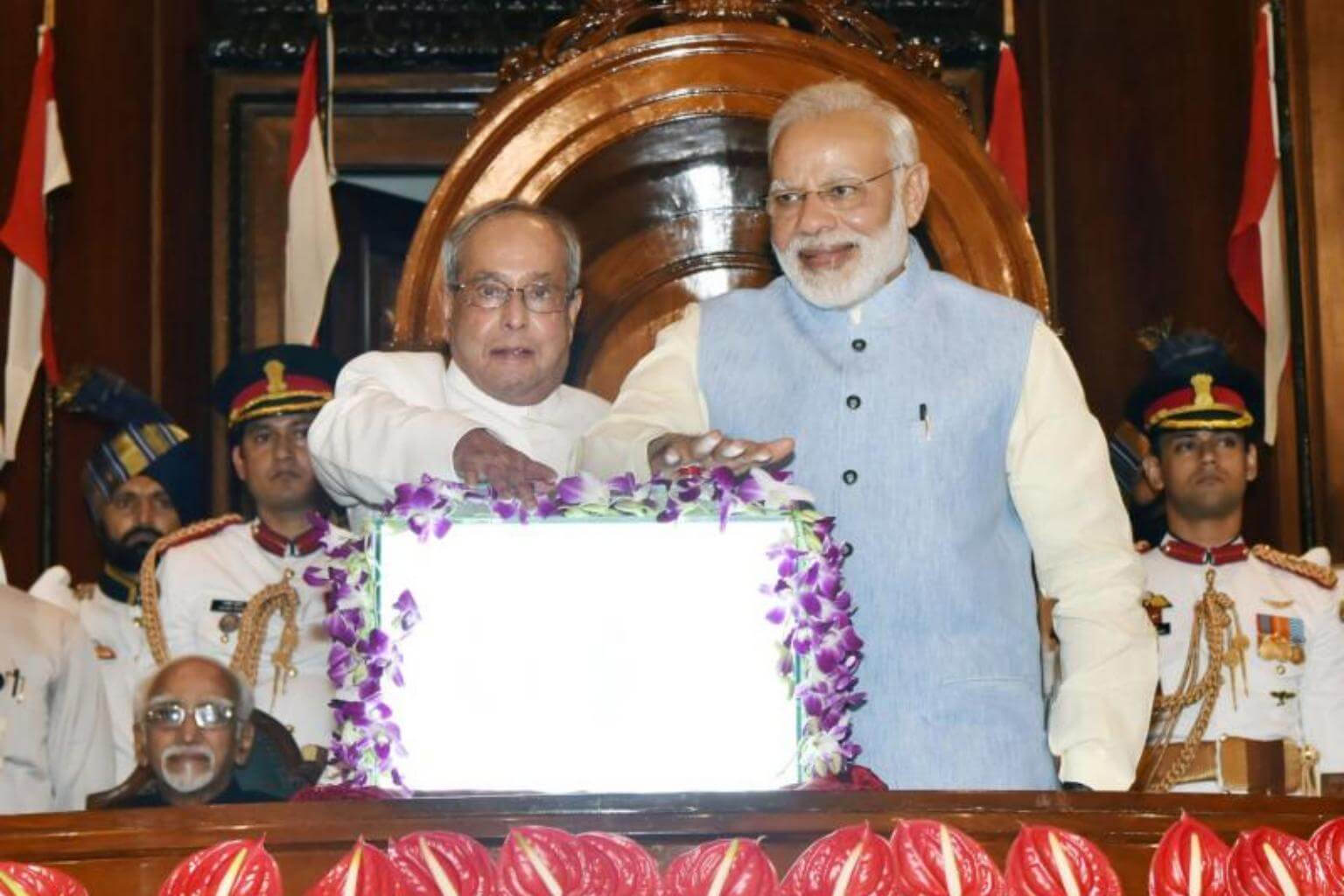Confusion for some on the first day of India's GST
Sign up now: Get insights on Asia's fast-moving developments

Indian President Pranab Mukherjee (left) and the Indian Prime Minister Narendra Modi (right) press the buzzer to launch the Goods & Service Tax (GST), in the Central Hall of Parliament at midnight in New Delhi, India, on July 1, 2017.
PHOTO: EPA
Follow topic:
NEW DELHI - Confusion plagued the first day of the Goods and Services Tax roll-out in India even as Prime Minister Narendra Modi assured the nation that the biggest tax reform in decades would boost economic growth.
Major shops and restaurants migrated immediately into the new system, while smaller shops and traders struggled, particularly with the different tax rates for different items and services.
Many traders, who don't have computers, were writing out invoices trying to figure out the taxes on Saturday (July 1).
"I am just listening to my accountant for now. My accountant has given me a list. So I am using that," said Mr Ashok of Ashok Stores, a convenience store in Delhi.
The confusion was expected to last another week or two.
"There are many traders who have multiple commodities attracting multiple taxes. Wherever there is confusion they are asking fellow traders or consultants to understand the rates. I think in another week or 10 days when traders are accustomed this confusion will also not be there," said Mr Praveen Khandelwal, national secretary-general of the Confederation of All India Traders, who said the real challenge was actually ahead with filing monthly and annual returns and claiming credit on the cost of inputs.
India's GST, unlike Singapore's, has four bands set at 5 per cent, 12 per cent, 18 per cent and 28 per cent, depending on the item or service. Some everyday items will now be cheaper, such as soap, cheese and packaged tea, others will become more expensive, such as chewing gum, chocolate and shampoo. Electrical goods, including televisions and washing machines will also become more expensive, along with going to beauty parlour and buying gold.
Overall, the GST aims to simplify India's labyrinth of nearly a dozen state and federal taxes that often led to long queues at state borders for truck drivers who had to pay different taxes for the goods they were shipping. The GST will end these delays.
Some retailers took advantage of the GST, offering discounts.
Big Bazaar, a chain of department stores, celebrated the GST's launch with a midnight sale offering up to 22 per cent savings.
Mr Kishore Biyani, Group CEO, Future Group, which runs Big Bazaar, tweeted the store's first sale receipt of 1,055 rupees (S$xxx) under the GST regime and explained the sale was to celebrate the implementation of the GST.
The unified tax is expected to boost manufacturing, improve tax collection, reduce the scope for corruption and increase revenues.
The GST, which had been in the works for over a decade,
was launched at the stroke of midnight from Parliament by Mr Modi and Indian President Pranab Mukherjee
"I request those who have fears to dismiss them," said Mr Modi.
"The country is moving a step forward towards a modern taxation system. This is a system that is simpler, more transparent. It will help us curbing black money and corruption and reward honesty," he said.
The opposition Congress boycotted the ceremony saying it did not support the current version even as President Mukherjee, a former Congress finance minister, called the GST a much needed "disruptive change" but acknowledged there would be "teething troubles and difficulties in the initial stages".
Amid the confusion, consumers were happy that the sales, which started a month ago, were still continuing.
"The sales were really fantastic. The prices were down on electronics. But it is also scary, maybe the prices are going hike up eventually," said Ms Ritu Sharma, a travel consultant, who picked up a television at a 40 per cent discount.

